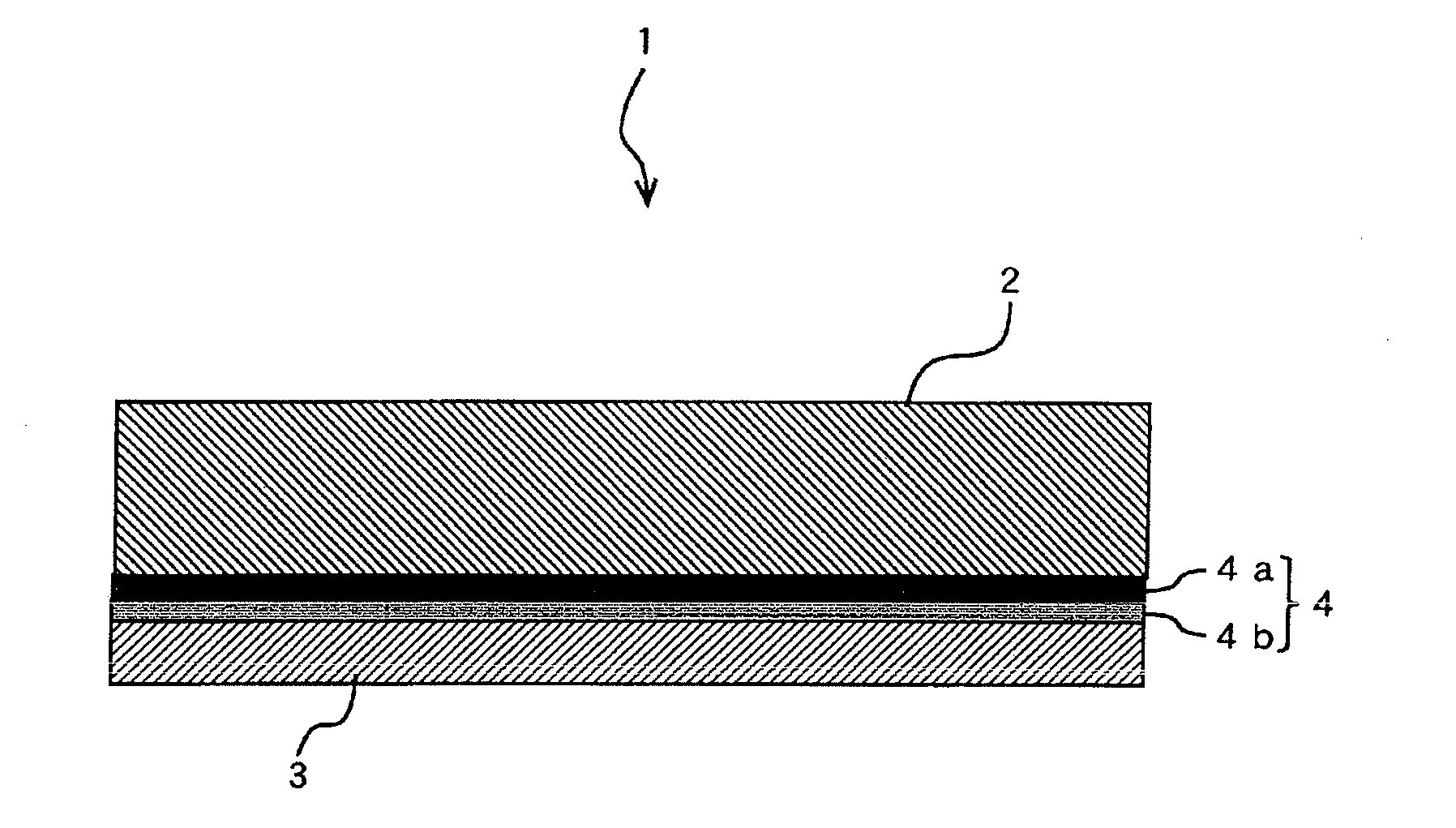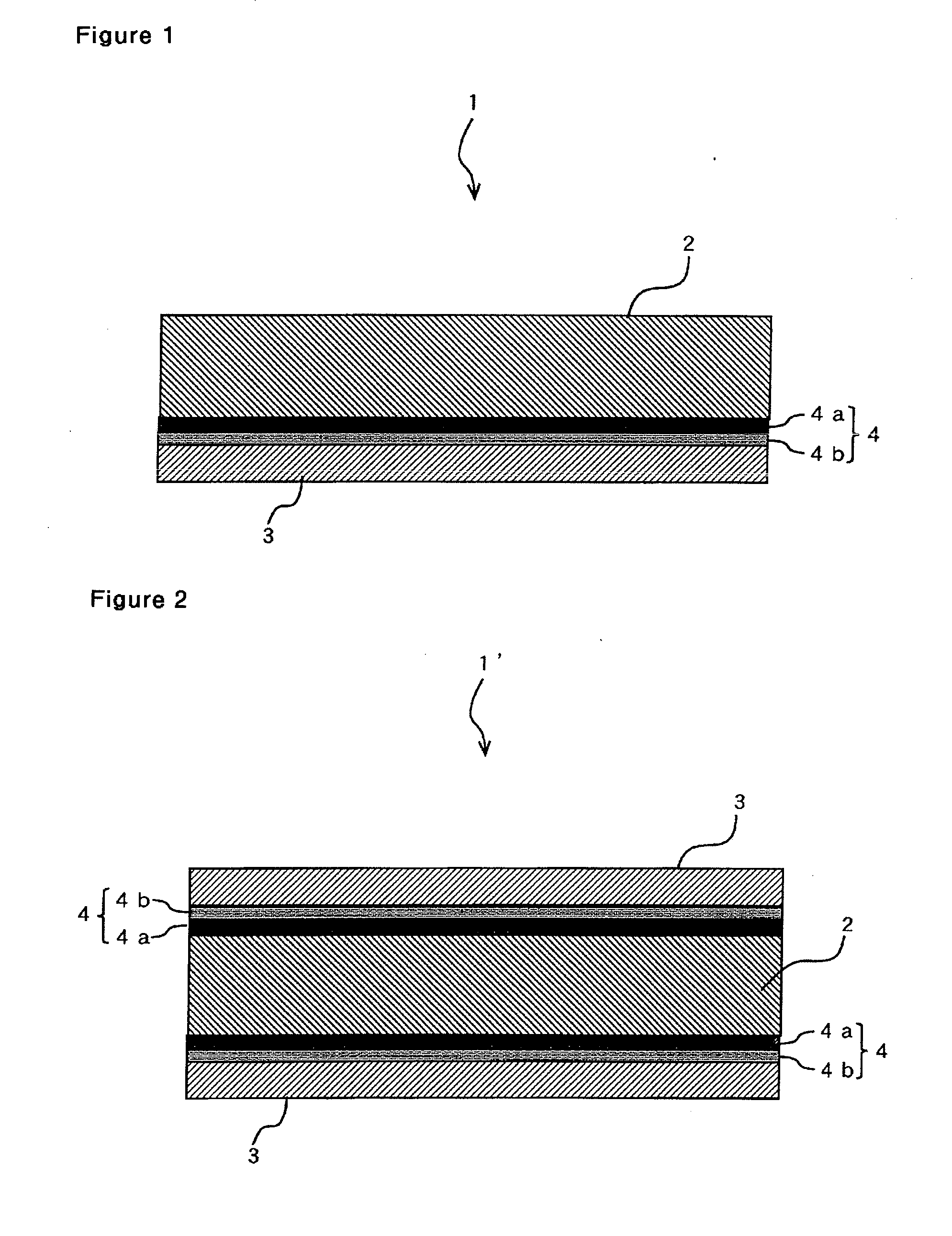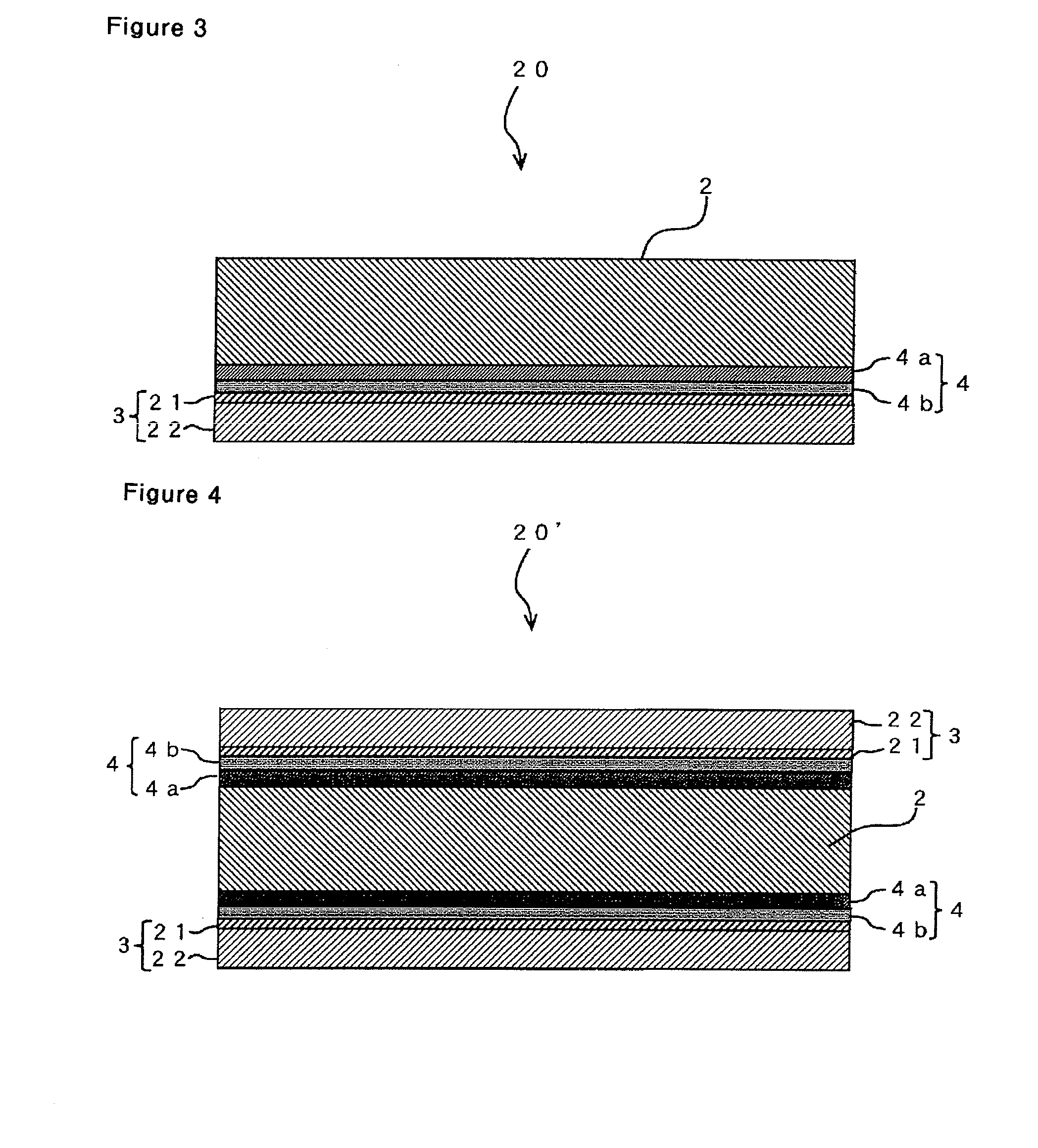Copper foil with carrier sheet, method for manufacturing copper foil with carrier sheet, surface-treated copper foil with carrier sheet and copper-clad laminate using the surface-treated copper foil with carrier sheet
a carrier sheet and copper foil technology, applied in the field of copper foil with carrier sheet, can solve the problems of difficult control of difficulty in quality assurance of the release strength between the carrier layer and the copper foil layer, and difficulty in ensuring the release strength, so as to achieve the effect of reducing the amount of chromium deposition, and improving the stability of the thermal resistan
- Summary
- Abstract
- Description
- Claims
- Application Information
AI Technical Summary
Benefits of technology
Problems solved by technology
Method used
Image
Examples
example 1
[0095]In the example 1, the first copper foil with carrier sheet 1 shown in FIG. 1 was manufactured. For the carrier sheet 2A, an electrodeposited copper foil of 35 μm thick classified to grade 3 was used, and the 3 μm thick copper foil layer 3 was formed on the shiny side where average roughness (Ra) is 0.21 μm. The production conditions will be described in step by step of processing. In the electrolysis steps described below, a dimensionally stable anode (DSA) was commonly used for the anode unless the material is otherwise stated specifically.
[0096]First, acid pickling was performed to the carrier sheet 2. In the acid pickling, the carrier sheet 2 was dipped for 30 seconds in a diluted sulfuric acid solution of 150 g / l in sulfuric acid concentration and 30° C. in solution temperature to remove the oxide film on the surface, followed by rinsing with water and then drying.
[0097]Process A: The sputtering apparatus used for the formation of the bonding interface layer on the carrier...
example 2
[0107]In the example 2, the result in manufacturing of the second copper foil with carrier sheet 20 shown in FIG. 2 will be described. In the example 2, the same electrodeposited copper foil as in Example 1 was used for the carrier sheet 2, and the copper foil layer 3 of 5 μm thick was formed on the shiny side where average roughness (Ra) is 0.21 μm. The manufacturing conditions will be described below in step by step of processing. In the example 2, acid pickling was performed to the carrier sheet 2 under the same conditions as in Example 1 first.
[0108]Process a: To prepare samples 1 to 4 listed in Table 1, titanium layers as metal layer having various thicknesses were formed on the carrier sheets, i.e. the shiny side of the electrodeposited copper foils, by the same method as process A of Example 1.
[0109]Then, to prepare samples 1 to 4 listed in Table 1, carbon layers of various thicknesses were formed on the titanium layers of the samples by the same method as process A of Exampl...
example 3
[0114]In the example 3, the second copper foil with carrier sheet 20 shown in FIG. 2 as manufactured in a similar process to that in Example 2. Since the process is basically the same as that in Example 2, only the different parts will be described.
[0115]First, acid pickling was performed to the carrier sheet 2. In the acid pickling, the carrier sheet 2 was dipped for 30 seconds in a diluted sulfuric acid solution of 150 g / l in sulfuric acid concentration and 30° C. in solution temperature to remove the oxide film on the surface, followed by rinsing with water and then drying.
[0116]Process a: For the formation of the bonding interface layer on the carrier sheet dried, a wind-up type sputtering apparatus SPW-155 manufactured by Nihon Shinkugijutsu Co. was used for the sputtering apparatus, and the target used was a nickel target of 300 mm×1700 mm in size. As for sputtering conditions, an achieved vacuum level Pu was less than 1×10−4 Pa, a sputtering pressure PAr was 0.1 Pa and a sput...
PUM
| Property | Measurement | Unit |
|---|---|---|
| Temperature | aaaaa | aaaaa |
| Temperature | aaaaa | aaaaa |
| Thickness | aaaaa | aaaaa |
Abstract
Description
Claims
Application Information
 Login to View More
Login to View More - R&D
- Intellectual Property
- Life Sciences
- Materials
- Tech Scout
- Unparalleled Data Quality
- Higher Quality Content
- 60% Fewer Hallucinations
Browse by: Latest US Patents, China's latest patents, Technical Efficacy Thesaurus, Application Domain, Technology Topic, Popular Technical Reports.
© 2025 PatSnap. All rights reserved.Legal|Privacy policy|Modern Slavery Act Transparency Statement|Sitemap|About US| Contact US: help@patsnap.com



